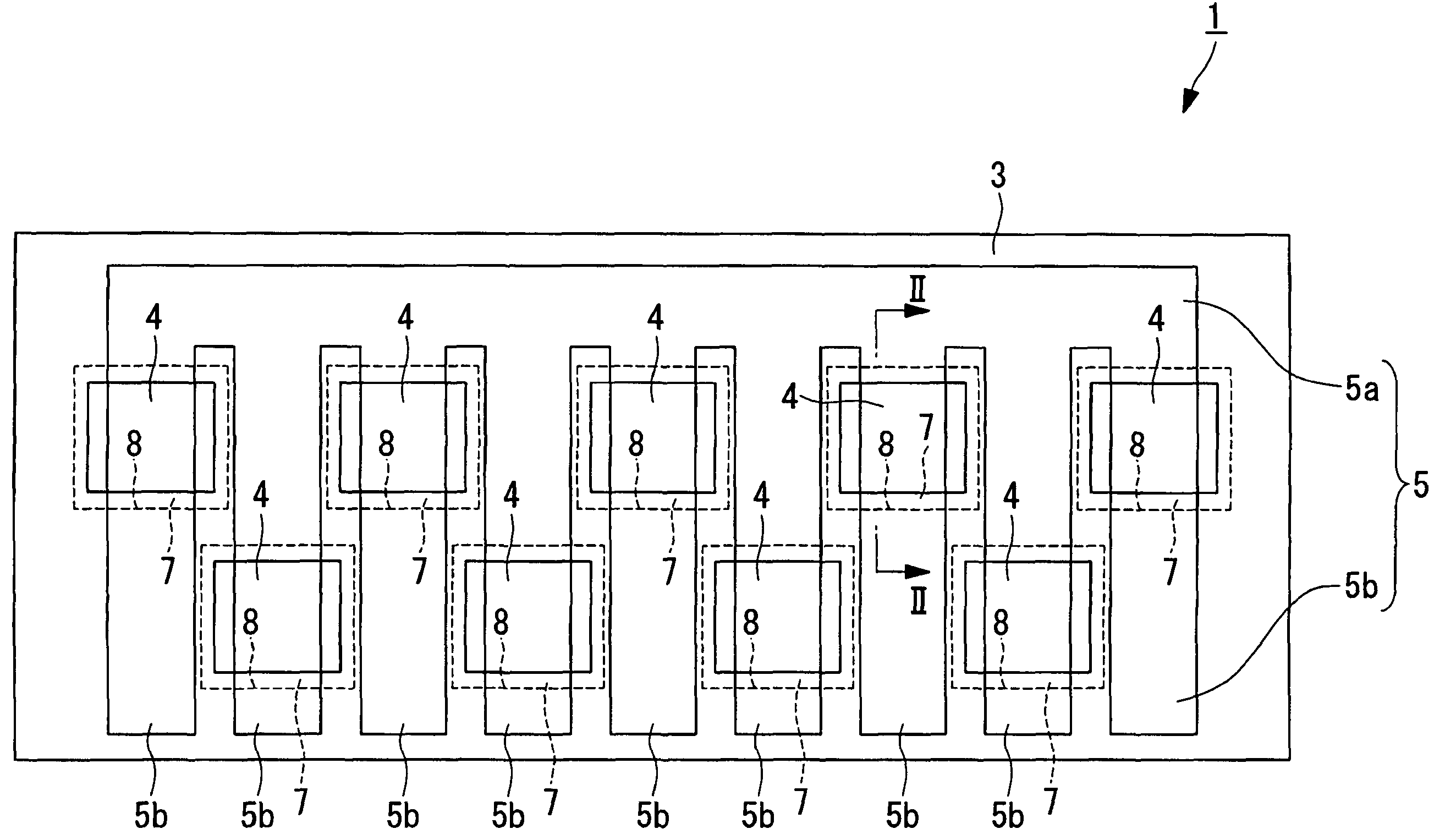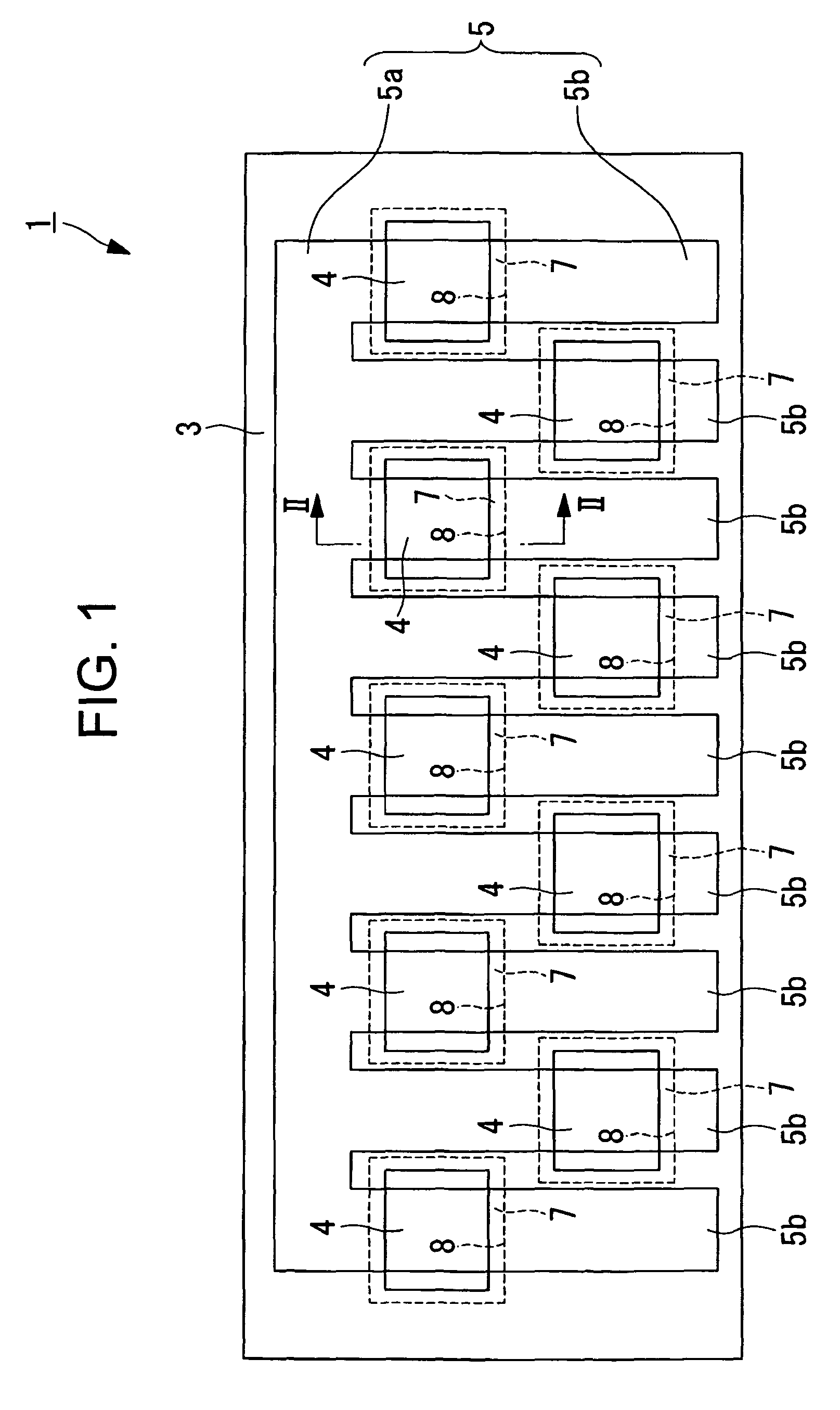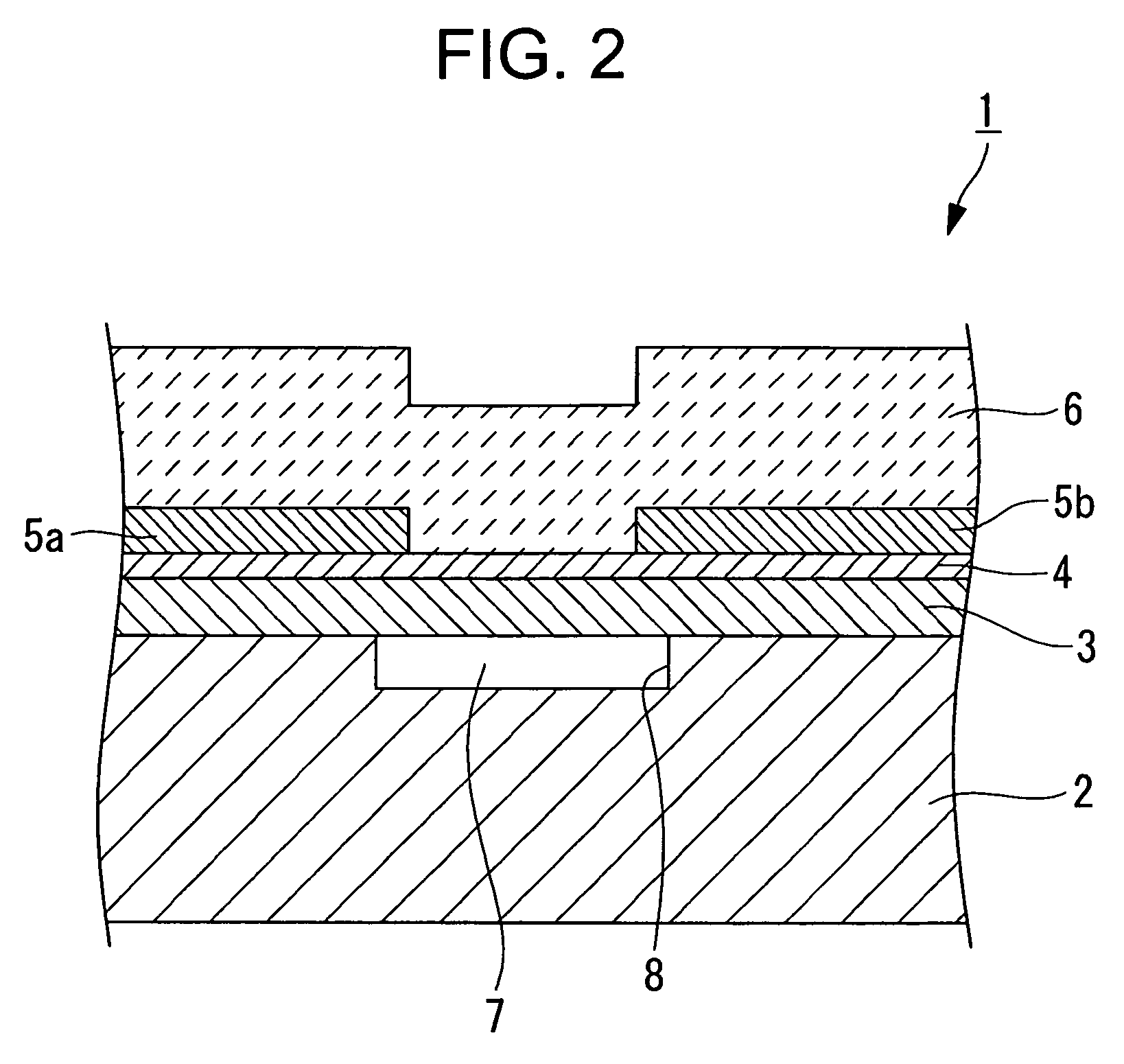Heating resistance element component and printer
a technology of heating resistors and components, applied in printing and other directions, can solve the problems of reducing heating efficiency, reducing mechanical strength of substrates, and unable to form hollow portions in regions much larger than regions, so as to increase the heating efficiency of heating resistors, reduce power consumption, and increase the strength of supporting substrates.
- Summary
- Abstract
- Description
- Claims
- Application Information
AI Technical Summary
Benefits of technology
Problems solved by technology
Method used
Image
Examples
first embodiment
[0026]Hereinafter, a heating resistance element component according to the present invention is described with reference to FIG. 1 and FIG. 2.
[0027]FIG. 1 is a plan view of a thermal head which is a heating resistance element component according to this embodiment, which shows a state where a protective film is removed. FIG. 2 is a sectional view taken along an arrow II-II of FIG. 1.
[0028]A heating resistance element component 1 according to this embodiment is, for example, a thermal head used in a thermal activation device 25 (see FIG. 4) using a thermosensitive adhesive label (hereinafter, referred to as “thermal head”).
[0029]As shown in FIG. 2, the thermal head 1 includes a supporting substrate (hereinafter, referred to as “substrate”) 2 and an undercoat (insulating film) 3 formed on the substrate 2. As shown in FIG. 1 and FIG. 2, a plurality of heating resistors 4 are formed (arranged) in a zigzag shape along a main scanning direction (horizontal direction in FIG. 1) on the unde...
second embodiment
[0052]A heating resistance element component according to the present invention is described with reference to FIG. 3. FIG. 3 is a plan view of a thermal head which is the heating resistance element component according to this embodiment.
[0053]A heating resistance element component 11 according to this embodiment is different from the thermal head 1 according to the first embodiment in that the width of the common wire 5a or the width of the individual wires 5b is smaller in an area adjacent to the heating portions of the heating resistors 4 along the main scanning direction than the width of the common wire 5a or the width of the individual wires 5b in an area located in the vicinity of the heating portions of the heating resistors 4. Other components are the same as those described above according to the first embodiment, and thus their descriptions are omitted here.
[0054]According to the heating resistance element component 11 according to this embodiment, the heating resistors 4...
PUM
 Login to View More
Login to View More Abstract
Description
Claims
Application Information
 Login to View More
Login to View More - R&D
- Intellectual Property
- Life Sciences
- Materials
- Tech Scout
- Unparalleled Data Quality
- Higher Quality Content
- 60% Fewer Hallucinations
Browse by: Latest US Patents, China's latest patents, Technical Efficacy Thesaurus, Application Domain, Technology Topic, Popular Technical Reports.
© 2025 PatSnap. All rights reserved.Legal|Privacy policy|Modern Slavery Act Transparency Statement|Sitemap|About US| Contact US: help@patsnap.com



